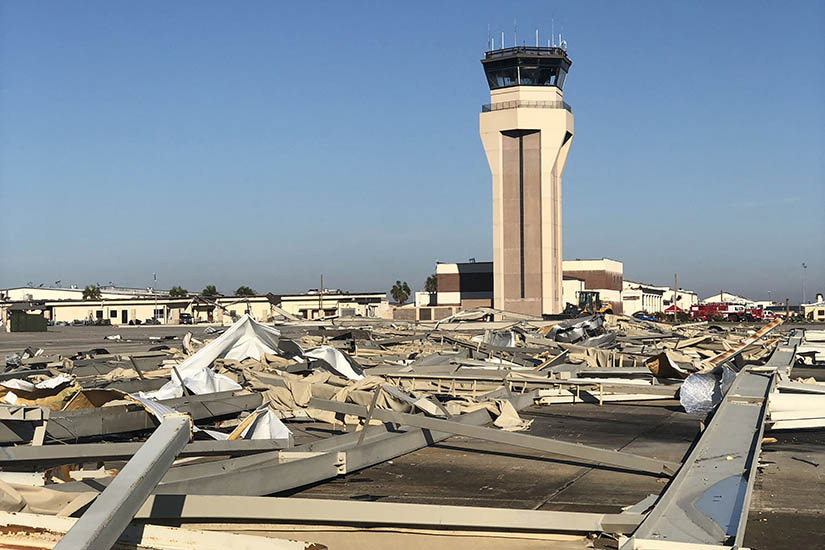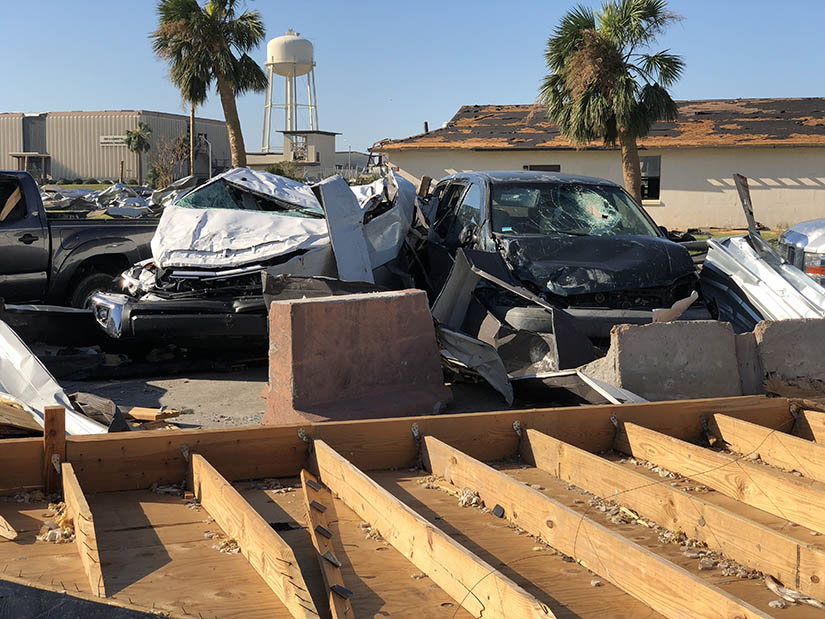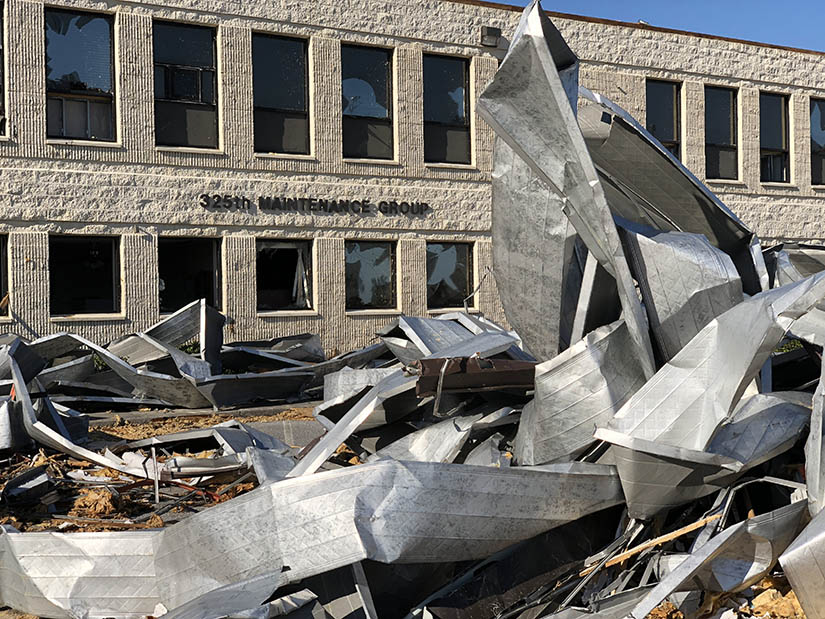Hurricane Puts NREL Resilience Analysis Tool to the Test

The devastating hurricane that struck northwest Florida in October 2018 proved an ideal case study for a risk assessment tool developed by the National Renewable Energy Laboratory (NREL).
Prior to Hurricane Michael making landfall, the U.S. Department of Defense had tasked NREL with developing a means to identify hazards and threats to the energy grid, analyze risks to energy infrastructure, and identify and prioritize investments in making bases and installations more resilient. The Category 5 hurricane struck Tyndall Air Force Base near Panama City with such force that 484 buildings were destroyed or damaged beyond repair.
“Natural disasters are unfortunate when they occur, but they put our findings and resilience solutions to the test,” said Eliza Hotchkiss, technical group manager of the Resilient Systems Design and Engineering Group at NREL and co-author of the newly published paper, “After the Hurricane: Validating a Resilience Assessment Methodology,” which appears in the International Journal for Disaster Risk Reduction.

The initial assessment of vulnerabilities at Tyndall was completed two months before the hurricane. Kate Anderson, corresponding author of the paper, was among the researchers who returned to Tyndall seven months after the storm.
“We saw large swaths of forest where all the trees had snapped cleanly in half, huge piles of debris as many buildings were demolished, and large hangars that typically housed F-22s, now covered in tarps after their roofs had blown off,” said Anderson, manager of the Modeling & Analysis Group at NREL.
In addition to Hotchkiss and Anderson, other co-authors are Lissa Myers, Sherry Stout, Nick Grue, and Nicholas Gilroy, all from NREL; and Maj. Josh Aldred and Michael Rits from the Air Force Civil Engineering Center (AFCEC). AFCEC is based at Tyndall.
The Department of Defense must report on the most climate-vulnerable installations for each branch of service and improve the resilience of its infrastructure and grid by better accounting for extreme weather events and future sea-level rise.
Historically, resilience assessment efforts external to NREL provide insight into where vulnerabilities exist, but do not offer solutions. The methodology NREL developed in collaboration with AFCEC established a baseline, identified potential hazards, threats and vulnerabilities, and gave each a score to assess the highest risks. The tool also offers options to reduce the exposure or consequence of each vulnerability.

The return to Tyndall after the hurricane revealed new risks. The downed trees, the researchers noted, increased the possibility of both wildfire and flooding.
Hurricane Michael knocked out electricity across the base for about a week, but diesel generators were able to provide backup power. The analysis reported relying on a single type of fuel for backup generators and transportation could still pose a problem in future events and recommended vehicles using alternative fuels.
Because the hurricane hit before Tyndall could implement any of the recommended changes to reduce vulnerabilities, the effectiveness of the proposed mitigation actions could not be quantified. However, many of the suggested mitigation measures likely would have increased the base’s resilience during Hurricane Michael. For example, having backup analog communication channels could have helped when cellular phones and VoIP service failed.
The Department of Defense funded the research.

